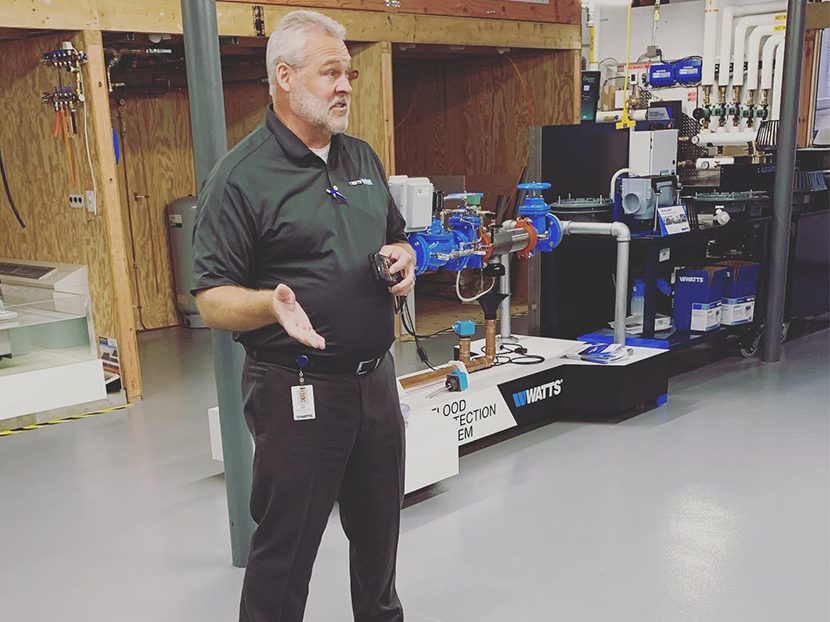2nd Annual Watts Healthcare Symposium
One-day event allows for dialogue on the past, present and future of proactive approaches to water safety

On October 8, manufacturer Watts gathered 45-plus professionals with various connections to water safety at its learning center in North Andover, Mass. for its 2nd Annual Healthcare Symposium. Professions represented included designers, engineers, hospital administrators, scientists, researchers and more. Conversation ranged from water safety plans and healthcare codes to legionella outbreak case studies and pathogen laboratory testing protocols. A theme consistent throughout was the expectation of the plumbing industry to transition from the recent point of education on water safety to a state of operational excellence.
The day began with a welcome from Watts President of Americas and Europe Munish Nanda. In his introduction, Nanda set the tone for the urgency of the conversations that would proceed by providing a striking statistic that about 3 percent of hospital patients have a healthcare associated infection (HAI). He went on to explain that waterborne infections are of concern because of the multiple touch points that patients have with water in a hospital environment, from improper cleaning of tools with water instead of sanitizing chemicals to showers and sinks in patient rooms.
Presenter Shatha Salah, of UAB Hospital, provided an ideal transition from Nanda’s conversation as she provided insights from the legionella outbreak at her hospital. Salah explained the reactive water safety planning process that UAB Hospital had to develop after two patients died. Salah’s presentation showcased the intricacy of water safety plans and the administrative manpower necessary to execute them successfully as an ongoing protocol. Her presentation detailed the need for frequent plumbing system testing, vigilant documentation of plumbing modifications, and the necessity of multiple water sanitizing approaches such as monochloramine, filters, hyperchlorination and copper-silver ionization.
Next, Dr. Williams Rhoads, of Virginia Tech, provided a technical discussion of the implications of water safety design, including water temperature, water age, material types, disinfectants and flushing. A striking point of his presentation was the explanation of unintended consequences of water safety treatment and prevention. Dr. Rhoads encouraged engineers to research and consider how materials and chemicals interact when designing systems. Dr. Rhoads also pointed out other microbial contaminants, such as adenovirus, calicivirus, and campylobacter jejuni, which researchers are exploring in order to be proactive with future water safety issues — unlike the reactive approaches that have had to be taken with the rise of legionella.
During the lunch break, attendees were given a tour of the Watts Learning Center. The center showcases how Watts products can be designed in a space and also allows professionals to test products to see how they function.
After lunch, attendees reconvened to hear Frank Sidari, of Special Pathogens Laboratory, examine waterborne pathogens and the testing processes for identifying them. Sidari discussed some of the contaminants, other than legionella, which are anticipated to occur in public water systems but are currently not subject to National Primary Drinking Water (NPDW) regulations. Some of those contaminants include pseudomonas aeruginosa, acinetobacter spp., and burkholderia cepacia. Sidari implored engineers and facility managers to take a closer look at infection control in water systems in order to reduce risk associated with opportunistic waterborne pathogens. He detailed the need to develop a water safety and management team, including laboratory testing partners, to ensure there are coordinated efforts.
The final presentation of the day was given by engineer Aaron Bock, of Cannon Design. Bock provided a comprehensive review of design methodologies for water circulation and temperature, premise plumbing design for waterborne pathogens, energy conservation, and maintenance of systems.





